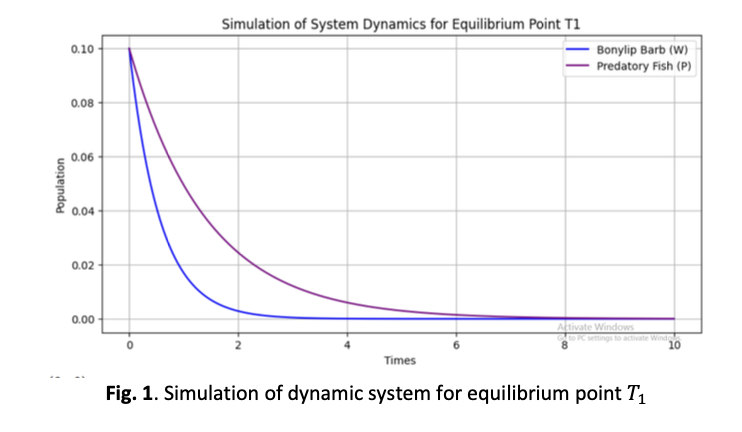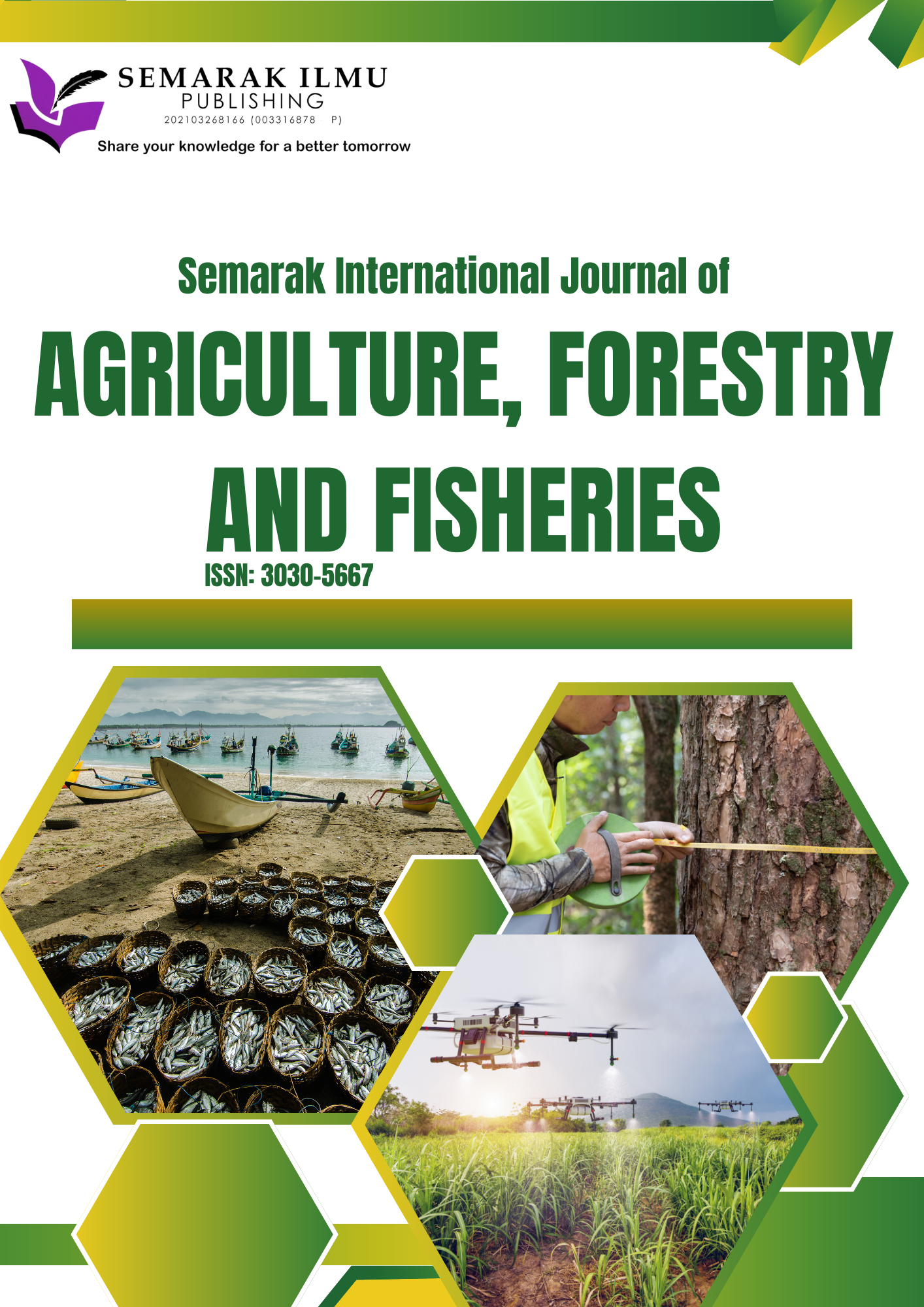Dynamic Analysis of the Predator-Prey Model on the Decline of the Bonylip Barb Fish Population in Rawa Pening Lake, Central Java, Indonesia
Keywords:
Bonylip Barb Fish, mathematical model, predator-preyAbstract
This research aims to model the population dynamics of the Bonylip Barb Fish (Osteochilus vittatus Valenciennes) and predator fish in Rawa Pening Lake using the Lotka-Volterra predator-prey mathematical model. The purpose of this study is to understand the interaction between the Bonylip Barb Fish and predator fish, as well as to determine the equilibrium points and the stability of the populations of both species. The methods used include constructing the mathematical model, determining equilibrium points, linearizing the model, analyzing the stability of the equilibrium points, and performing numerical simulations using Google Colab. The results show that the predator-prey mathematical model is effective in describing the interaction between the Bonylip Barb Fish and predator fish in Rawa Pening Lake. The equilibrium points obtained are when both populations are extinct, when the predator population is extinct, when the prey population is extinct, and when both populations interact, showing system stability with damped oscillations. This means that the populations of both species will oscillate around the equilibrium point, but disturbances from equilibrium will decrease over time. This indicates that the population system of the Bonylip Barb Fish and predator fish in Rawa Pening Lake has long-term stability. This research provides important contributions to the management and conservation of the Rawa Pening Lake ecosystem by providing a better understanding of the population dynamics of the Bonylip Barb Fish in the lake.








